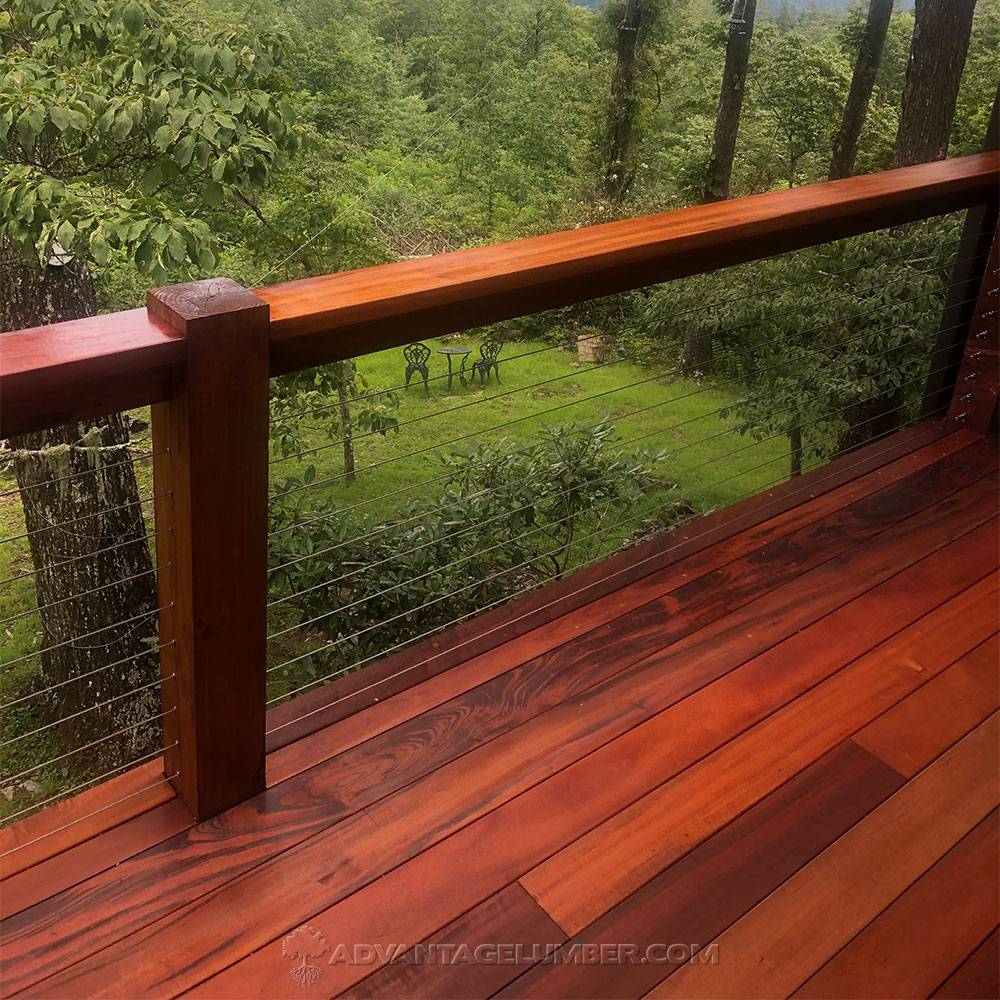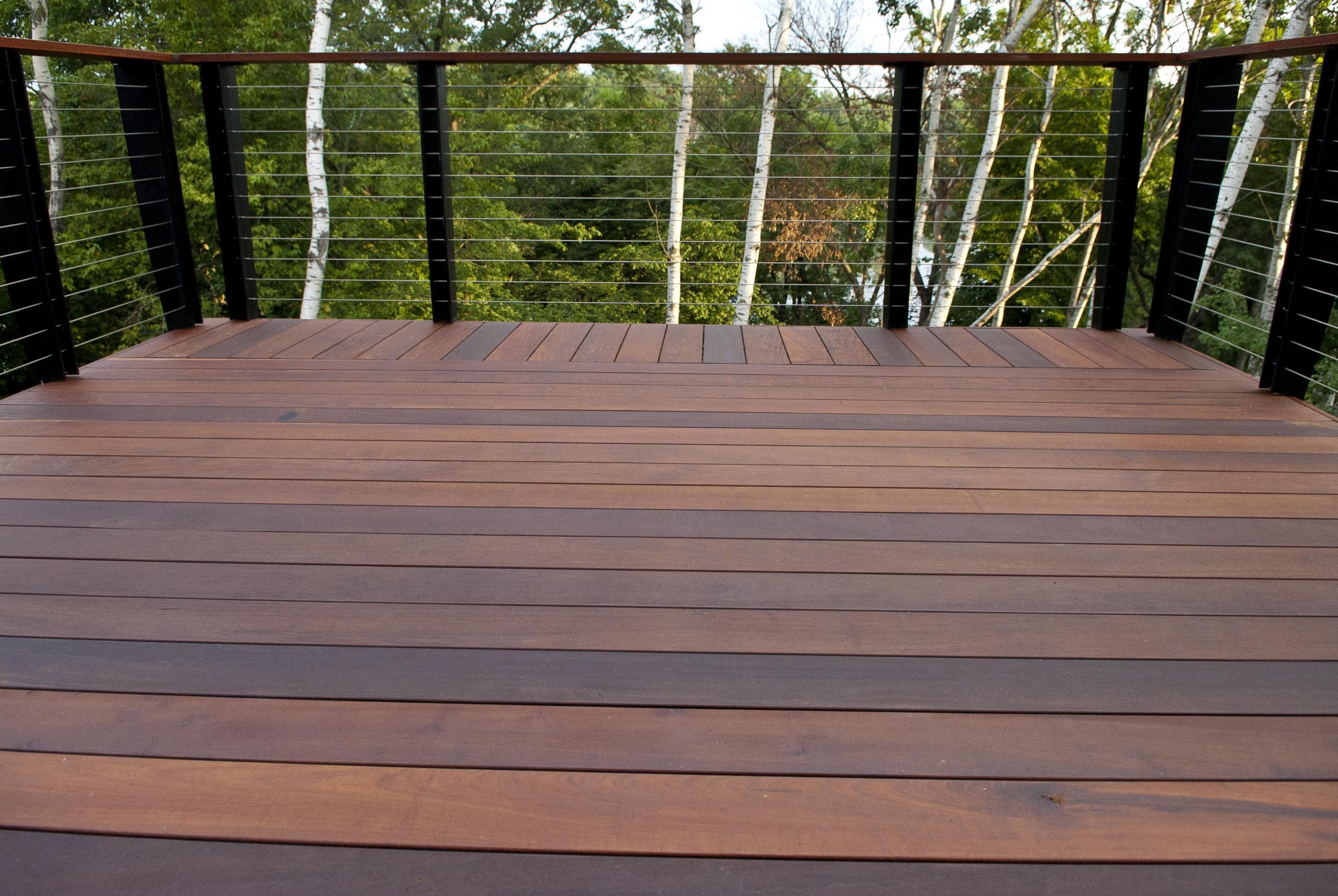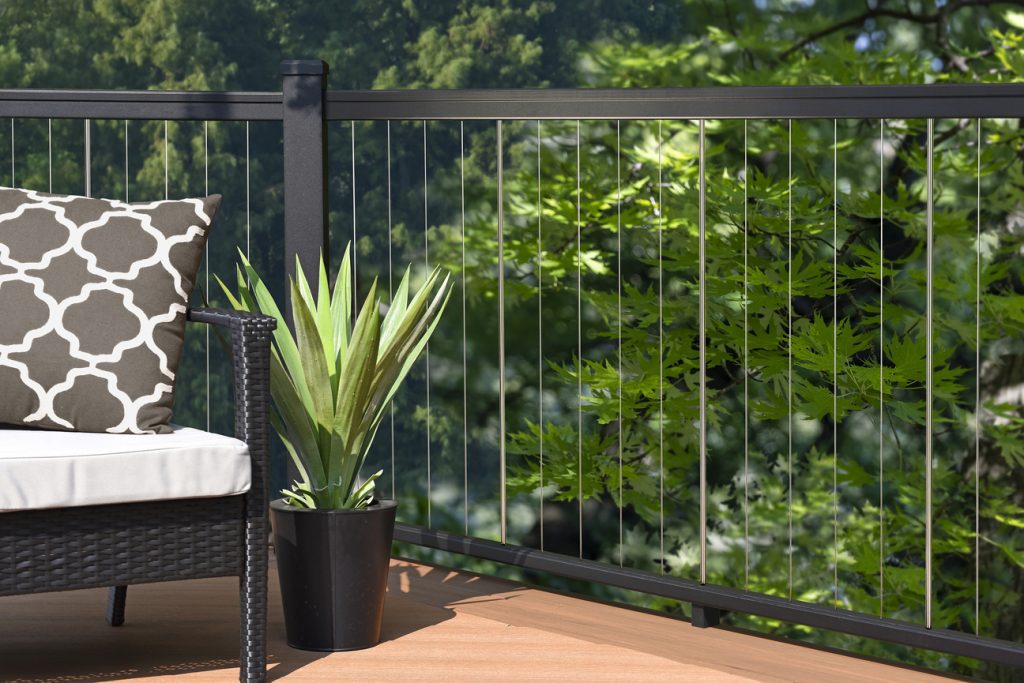When it comes to selecting the perfect railing for your deck, both aesthetic appeal and cost are major considerations. Among the popular choices are cable deck railings and standard pressure-treated wood railings. Each comes with its unique set of features, costs, and maintenance requirements.
In this blog post, we’ll look at the cost of cable deck railings, compare them with pressure-treated wood railings, and evaluate the ongoing maintenance costs associated with each option.
Initial Cost: Cable Deck Railing vs. Pressure-Treated Wood Railing
Cable Deck Railing
Cable deck railings are known for their sleek, modern look and unobstructed views. They consist of horizontal or vertical cables in place of traditional balusters or spindles. The materials used typically include stainless steel cables and either metal or wood posts.
The cost of cable deck railing systems can vary significantly based on the material of the posts and the complexity of the design. On average a complete kit that includes the aluminum railing and posts the cost can range from $50 to $100 per linear foot.
As shown below you can see a TimberTech vertical cable railing system complete with powder coated aluminum posts and rails. These kits come ready to install and are fairly easy to install with the installation instructions provided.
Pressure-Treated Wood Railing
On the other hand, pressure-treated wood railings are a more traditional choice and are favored for their classic appearance and lower initial cost. The average cost for this type of railing can range from $10 to $20.
The wood is treated to resist rot, decay, and termites, which is essential for longevity but does not require the same investment as metal-based railings. The newer pressure treated lumber that no longer contains arsenic is starting to show it does not last as long.
We’ve taken many phone calls from customers who purchased our premium Ipe hardwood decking and 10 years later their Ipe decking still looks like new. However their pressure treated framing is rotting and needs to be rebuilt. Consider the lifespan of your investment in a good deck railing system.
Hardwood Railing with Cable Railing
Consider using durable hardwoods such as Ipe, Cumaru, Tigerwood, Brazilian Redwood and more. These hardwoods have show to last upwards of 75 year without rotting and are much more durable than pressure treated pine.

If you use one of these durable hardwoods paired with DeckWise Cable Railing Kits, you can get a hardwood railing with the cable railing infill cheaper than one the the aluminum cable railing kits.
Durability and Maintenance Costs
Cable Deck Railing
One of the significant advantages of cable deck railings is their durability. Stainless steel cables are resistant to corrosion and wear, making them a great option for harsh weather conditions. They require minimal maintenance, usually only needing periodic tightening and cleaning to maintain their appearance and functionality. This can result in lower long-term costs despite the higher initial investment.
Pressure-Treated Wood Railing
While pressure-treated wood is designed to withstand the elements, it does require regular maintenance to keep it in good condition. This includes staining or painting every few years, which can cost around $2 to $5 per square foot depending on whether you hire a professional or do it yourself. Additionally pressure treated wood can warp, crack and splinter over time, potentially leading to more frequent replacements or repairs.
Hardwood Railing with Cable Railing
Durable hardwoods such as Ipe, Cumaru and Tigerwood have proven to withstand the elements without as much maintenance as pressure treated. If you prefer the grey look hardwoods like Ipe require next to no maintenance. These woods naturally resist rotting, wood boring insects and are not plagued by all the issues that pressure treated is. To maintain the color of the wood simply roll on or spray a UV blocking oil such as Ipe Oil.
Long-Term Investment and Aesthetic Value
When deciding between cable deck railings, pressure-treated wood railings and hardwood railing, it’s important to consider not just the initial cost but the long-term investment. Cable railings offer a modern look and minimal view obstruction, which can enhance the overall aesthetic of a home and potentially increase its value. They are also less likely to need replacement in the foreseeable future, making them a good investment for those looking for longevity and minimal upkeep.
Pressure-treated wood railings, while initially cheaper, can require more frequent maintenance and replacement over time. However, for those who prefer a classic or rustic aesthetic, wood railings can be an attractive option that complements the traditional architectural styles.
Conclusion
In conclusion, while cable deck railings tend to have a higher initial cost compared to pressure-treated wood railings, their durability and low maintenance requirements can make them a more cost-effective option in the long run. The choice between the two will largely depend on personal preferences regarding aesthetics, budget, and how much maintenance one is willing to undertake. When planning your deck, consider not only the upfront cost but also the ongoing maintenance expenses and the potential impact on your home’s value. By doing so, you’ll be able to make an informed decision that balances both cost and quality.

